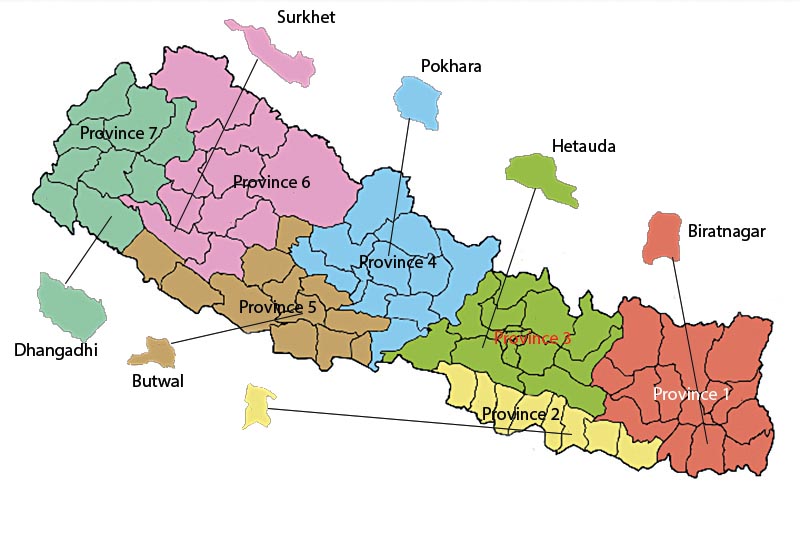Unbundling of authority gathers momentum
Kathmandu, February 19
As the provincial governments have started to set up ministries, departments and their extended arms for service delivery to the grassroots level, the ministries of the federal government have started to slash their functions and agencies to avoid duplication of works.
The role of federal government that was directly related to service delivery has been transferred to the lower layers of administration and the National Planning Commission (NPC) has asked the federal ministries to cut the programmes that fall under the jurisdiction of lower layers of administration while submitting their programmes for the next fiscal.
The NPC has also been further filtering the programmes submitted by the federal ministries seeking resources in next fiscal budget 2018-19. After the appointment of new vice chairman of NPC, the resource committee meeting led by the vice chairman of the apex planning body will provide the ceiling for federal ministries and they will have to design their programmes based on the given threshold.
On the other hand, the number of federal ministries will be limited to 15 from existing 31, and to seven at the provincial level. The federal ministries have been limiting their roles, and provincial and local administrations have been establishing their roles based on the provisions of the Constitution.
Citing the example of Ministry of Industry (MoI), Yam Kumari Khatiwada, secretary at the MoI, said that the ministry will retain the Department of Industry and Special Economic Zone Authority as its extended arms at the centre. However, other agencies like Department of Cottage and Small Industries, among other agencies, will go to the provinces, with extensions at the local levels.
“Other departments and agencies established for delivery of goods and services will go to the lower layers as the federal government will be engaged with specific functions in federal Nepal,” she said.
Khom Raj Koirala, joint secretary of the NPC, said that the administrative cost of the federal government will be reduced considerably. Expenditure — recurrent and development — of the federal government are expected to decline.
However, it is assumed that the federal government would still have some specific roles like looking into the expenses of judiciary, higher education, defence and internal security, diplomatic missions’ operation, pensions, among others, which would require huge budget.
Former finance secretary Shanta Raj Subedi said that 60 per cent of the total resource envelope might go for the federal government as there is less room to reduce the expenses on committed liability.
But Baikuntha Aryal, secretary of the National Natural Resources and Fiscal Commission (NNRFC), said that the expenses of the federal government might go down as the cost centres of the federal government would be minimised along with unbundling of authority to the lower layers of administration.
“The cost centres established at the lower layers of administration could substitute the cost centres at the federal level,” said Aryal. “We need not worry about fiscal burden in the federal system.”
Koirala said that after the appointment of NPC vice chairman, resource committee meeting will give ceiling to the federal government and NNRFC will also recommend the ceiling of grants — equalisation and conditional — to be transferred to the lower layers of administration.





